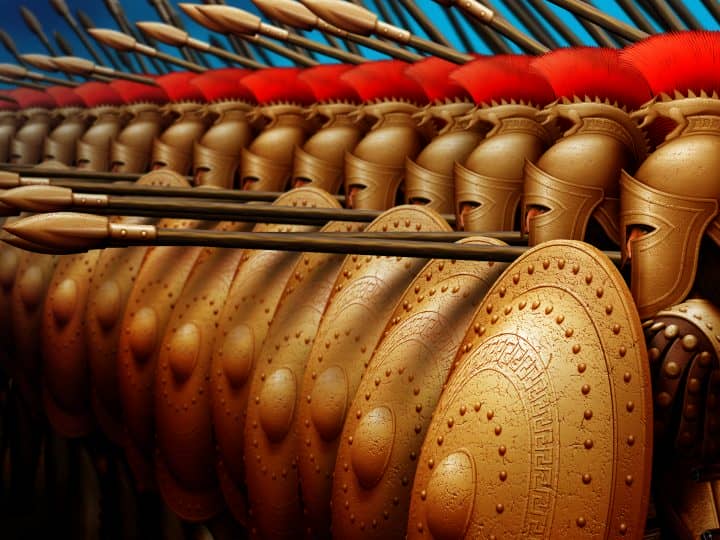 The Macedonian Phalanx was an infantry formation developed by Philip II of Macedon and utilized, to great success, by his son Alexander the Great during his campaign of conquest in the Achaemenid Empire. This famous infantry formation marked a significant change in the history of warfare as this was the first time an ancient power was able to use a long-range weapon like the Sarissa (a 6-meter pike) for a tactical advantage. This article explores the Macedonian Phalanx’s history, development, and adoption. Here’s ore information:
The Macedonian Phalanx was an infantry formation developed by Philip II of Macedon and utilized, to great success, by his son Alexander the Great during his campaign of conquest in the Achaemenid Empire. This famous infantry formation marked a significant change in the history of warfare as this was the first time an ancient power was able to use a long-range weapon like the Sarissa (a 6-meter pike) for a tactical advantage. This article explores the Macedonian Phalanx’s history, development, and adoption. Here’s ore information:
History of the Phalanx
The Macedonian Phalanx began forming during the wars of the Fourth Macedonian League from 358-347 BC, in which Philip II of Macedon faced off against the Illyrian tribes. During this time, Philip developed a tactical infantry system based on the classical Greek phalanx.
Phillip quickly recognized the potential of the Macedonian Phalanx. He formed and recruited an army of 16,000 elite infantry equipped with sarissas, large 12-foot shields, and bronze helmets. This was in contrast to his ill-equipped traditional Greek hoplite warriors. The phalanx was often used to prevent enemy movements along a front and proved extremely effective in the decisive victory against the Illyrians.
Alexander the Great, who succeeded his father as King of Macedon, led a brilliant military campaign that saw him conquer much of the known world. Alexander continued to use the phalanx throughout his campaigns and relied heavily on its formation. This was partly due to its offensive power, enabling Alexander to push through enemy lines. Although the phalanx was invaluable to the Macedonian victories, it was also somewhat limited in adapting to different terrain and strategies.
Development of the Phalanx
The formation of the Macedonian Phalanx was based on classical Greek hoplite warfare, which saw soldiers fighting in tight, shield-to-shield formation, with spears pointing forward. The development of the phalanx was revolutionary, as Phillip II of Macedon replaced the traditional spears of hoplite war with the Sarissa, a 6-meter pike.
The increased length of the Sarissa enabled the phalangites to fight at a greater distance, utilizing their weapons with greater reach and accuracy. The Sarissa’s increased length also enabled the soldiers in the phalanx to remain tightly packed in formation since the soldiers could avoid close combat without sacrificing their position. The phalangites would hold tightly to larger shields to protect themselves from enemy arrows and slingshots.
Adoption by Alexander the Great
Alexander the Great adopted the formation of the phalanx for his military campaigns to great success. Unlike his father, Alexander was a master tactician and was adept at utilizing the strengths of the phalanx to his advantage. He relied on the phalanx’s tight formation and reach of the Sarissa to break enemy lines. Additionally, Alexander placed his cavalry at the center of the formation, which allowed more flexibility within the phalanx to shift in response to the enemy.
The Macedonian Phalanx was an ingenious tactical formation that enabled Phillip II and Alexander the Great to conquer much of the known world. Adopting the Sarissa and large shields allowed the phalanx to fight with greater reach and accuracy than previous infantry formations. Its tight formation and high levels of discipline allowed it to reliably hold its ground against enemy attacks.
Although the formation was limited in adapting to different terrain, it proved extremely effective in the face of Alexander’s enemies. The phalanx remains to this day, one of the most impressive military formations in history.

